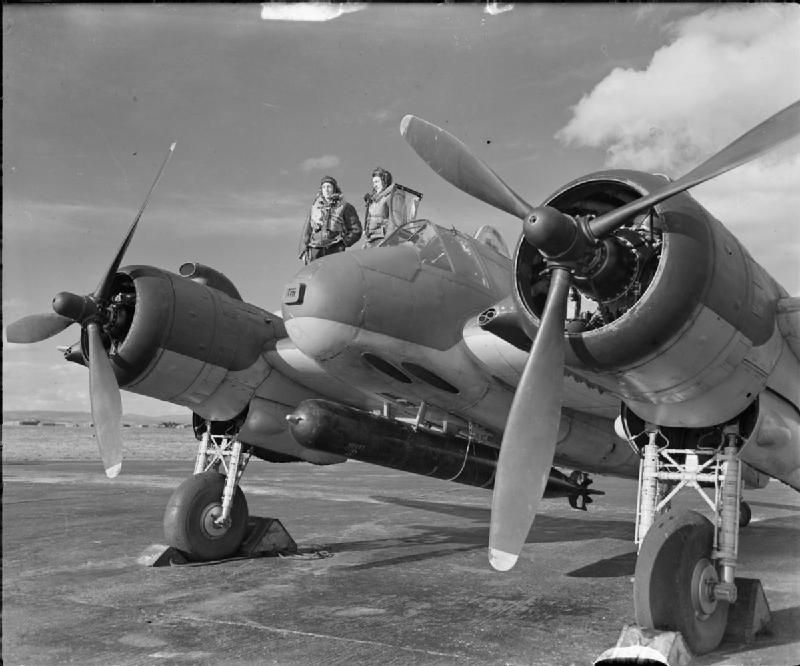Starting from a Racer
The first in Britain’s series of Bristol fighter planes was the Bristol Scout, which entered service early in WWI. The Scout was based on a pre-war racing plane.
A Speedy Fighter
The Scout was fast and mobile for its time, with a maximum speed of 100 miles per hour.
Hawker’s VC
The first Victoria Cross awarded for aerial combat was earned by Captain L. G. Hawker on July 25, 1915. On that day, he shot down three enemy aircraft while flying a Bristol Scout C.
It was particularly impressive given the disparity in weapons on the planes. The weaponry on Bristol Scouts was improvised, including attachments such as bolted on rifles. The planes Hawker beat were all armed with machine-guns.
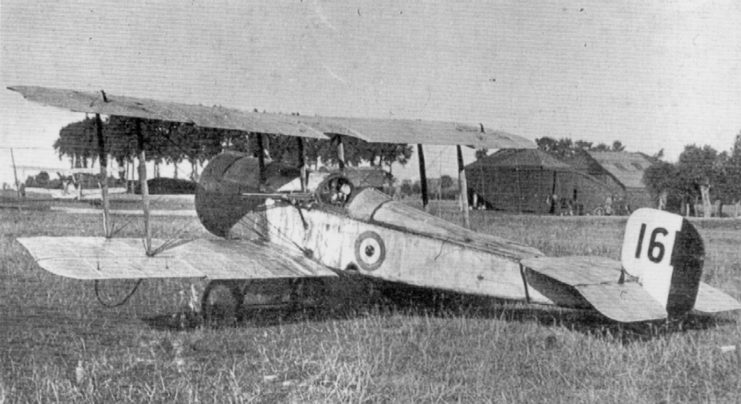
Arming Up
Introduced in November 1915, the Scout D was the first model to be equipped with machine-guns.
Fighting Zeppelins
Bristol Scouts were adopted by the Royal Navy Air Service, who used them when patrolling to stop Zeppelin bombing raids on Britain. The pilots threw explosive darts over the side of their planes at the Zeppelins.
Retired to Training
By mid-1916, the Scout had been overtaken by better planes. It was gradually withdrawn from frontline service, becoming a training aircraft.
The Bristol Fighter
One of the planes that replaced the Scout was the Bristol Fighter, the next in line of that type. The Bristol Fighter, also known as the Brisfit, was the best two-seater fighter of WWI.
Heavily Armed
One of the big advantages of the Brisfit was its armament. It had a forward-firing synchronized Vickers machine-gun, allowing the pilot to target enemies by steering his plane. It also had one or two 7.7mm Lewis guns attached to the rear cockpit, for use by the observer.
A Bad Start
The Brisfit got off to a bad start, with four out of six planes lost on their first mission. It happened for two reasons. Firstly, oil froze in some of the guns, which made them useless. Secondly, pilots treated the plane as a standard two-seater, and so did not take advantage of their forward guns.
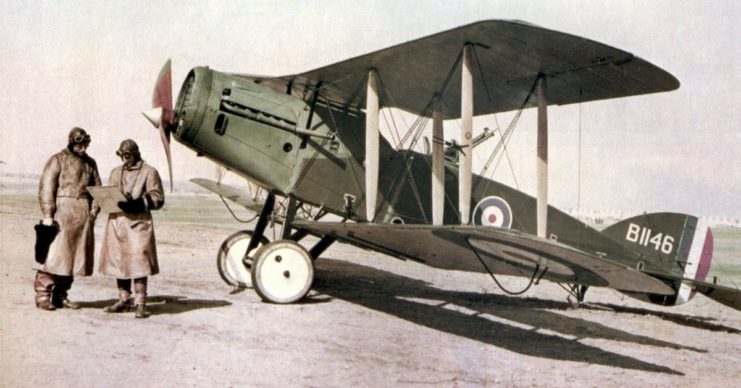
The First RAF Mission
On April 1, 1918, the Royal Air Force was formed. British military flying was now separate from the army and navy. A Brisfit was used in the first mission of the newly independent air arm.
The Inter-War Bulldog
Introduced in 1927, the Bristol Bulldog was an important part of the RAF for ten years between the world wars.
Most of Britain’s Air Defence
312 Bulldogs went into service in the United Kingdom. They made up around 70% of the country’s air defenses.
Innovations in Air Supply
The Bulldog had an oxygen supply for the pilot. At the time, it was an innovative feature, as most planes had not yet reached the speeds and heights where it was necessary.
Radio Contact
The Bulldog was also one of the early adopters of radio communication between planes. A short-range two-way radio allowed coordination between pilots and the ground.
Metal and Fabric
Although the Bulldog had an all-metal fuselage, it was still covered with fabric, as the planes of WWI had been.
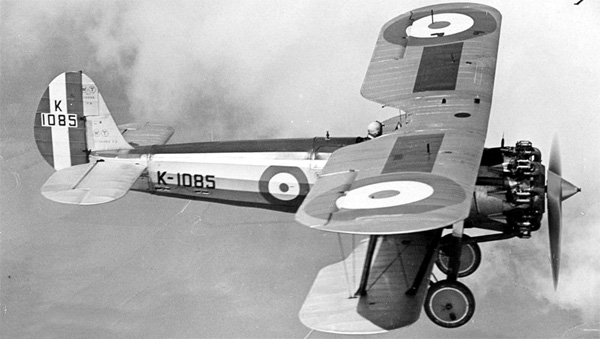
The Tail Skid
For all its innovations, the Bulldog retained some traditional features. Aerial operations were still launched from grass landing strips so it had a shock-absorbing tail skid for take-off and landing.
The Blenheim Arrives
First flown in 1935, the Bristol Blenheim was another great leap forward for the RAF.
Bomber Escort
The Blenheim was originally designed as a bomber. A three-seater fighter version was created to escort bombers on their missions and carry out ground attacks.
Blenheims at the War’s Start
By the time WWII broke out in September 1939, there were 111 Blenheim fighters in service with the RAF.
Becoming a Night Fighter
The Blenheim was outperformed by enemy fighters such as the Messerschmitt Bf109. As a result, they were switched to service as night fighters, where they were less vulnerable to high-performance planes.
Radar Interception
The Blenheims had success as night fighters through the skill and observation of their pilots. Then, in the summer of 1940, they were equipped with air-to-air radar. It was brand new technology, installed amid great secrecy, and it gave them a huge edge while fighting in the dark. No.25 Squadron, flying Blenheims, were the world’s first radar-equipped night-fighting unit.
A Blenheim IF from the Tangmere Fighter Interception Unit achieved the first ever radar interception late in July that year when it shot down a Dornier Do 17.
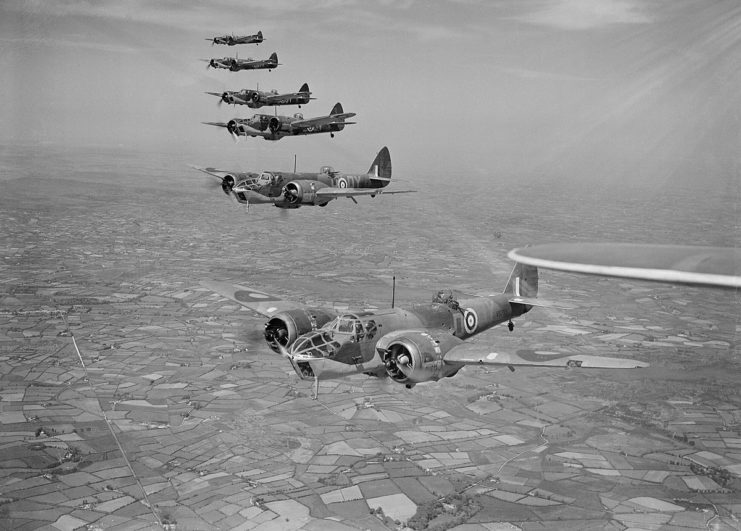
Filling a Gap
The Bristol company put forward a proposal for a heavily armed aircraft, not to fit any particular role but because they thought that the RAF needed something like it.
The RAF agreed. They wanted a heavily armed long-range fighter, in part to support bombers on their runs. The Beaufighter was commissioned.
A Speedy Introduction
The first Bristol Beaufighter flew on July 17, 1939. In taking elements from a Beaufort torpedo bomber, a design was created that was quickly produced and put into action. Only 13 months after it’s first flight, Beaufighters were joining frontline squadrons fighting the Germans in the Battle of Britain.
Heavy Weaponry Again
Once again, a Bristol fighter was one of the best armed in the skies. With six 7.7mm machine-guns and four 20mm cannons, it carried more firepower than any other frontline plane.
The First Designer Night-Fighter
The Beaufighter was the first purpose-built high-performance night-fighter. For its time, it was one of the most advanced machines in the air.
Different Beaufighters
Several variations on the Beaufighter were produced. The RAF equipped some with bombs and torpedoes. Day fighting versions served in Malta and North Africa and Coastal Command used Beaufighters to intercept enemy bombers over the Bay of Biscay.
Source:
Francis Crosby (2010), The Complete Guide to Fighters & Bombers of the World
